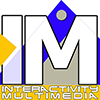Contents
The acknowledgement of learner diversity in the field of education has resulted in a transformation of instructional practices. Content customization has emerged as a powerful approach that acknowledges the unique learning styles, preferences, and needs of individual learners. By allowing students to personalize their learning experience, be it through choosing the format of content or accessing supplementary materials, content customization fosters engagement, motivation, and ultimately, more profound understanding.
1 Catering to Learning Styles
Each individual learner exhibits a unique learning style, which can be visual, auditory, kinaesthetic, or a blend of these modalities. The significance of content customization lies in its ability to empower learners to actively choose the format that best corresponds to their preferred learning style. For instance, visual learners can opt for a combination of text and visually stimulating images, whereas auditory learners might gravitate toward audio recordings or engaging podcasts.
By aligning the content format with learners’ specific styles, the information processing and retention process is optimized, ultimately leading to heightened comprehension and knowledge retention. This tailored approach acknowledges the diverse needs of learners and recognizes the importance of catering to their individual preferences for a practical and personalized learning experience.
Here is an example
Every learner possesses a distinct learning style, whether visual, auditory, kinesthetic, or a combination thereof. Content customization empowers learners to select the format that aligns with their preferred learning style. For instance, visual learners might choose text accompanied by relevant images, while auditory learners may opt for audio recordings or podcasts. By aligning the content format with their learning style, learners can process and retain information more effectively, leading to improved comprehension and knowledge retention.
The content can be provided as a sound file for auditory learners.
Another option is to provide the content as a (simple) animated video.
Source: Video created with AniMaker (EBI)
2 Enhancing Engagement
Engagement is crucial for effective learning, and content customization plays a pivotal role in fostering learner engagement. By providing learners with options to choose the content format, they become active participants in their learning journey. This sense of ownership and agency over their education promotes a deeper connection with the subject. Learners are more likely to be motivated and invested in their studies when they can engage with content in a manner that resonates with them personally.
3 Individualized Learning Paths
In addition to format customization, content customization also allows learners to access additional resources or supplementary materials based on their individual needs. Each student possesses unique strengths, weaknesses, and interests. By offering a variety of resources, such as textbooks, articles, videos, interactive simulations, or online tutorials, learners can tailor their learning experience to address their specific requirements. For example, a student struggling with a particular concept can explore supplementary materials that provide alternative explanations or additional practice exercises. This personalized approach supports individual learning goals, promotes self-directed learning, and maximizes the potential for mastery.
4 Fostering Critical Thinking
Content customization encourages learners to make choices and exercise critical thinking skills. When learners have the freedom to choose the format or explore supplementary materials, they must evaluate their own learning needs and make informed decisions. This process stimulates higher-order thinking and metacognitive skills, as learners reflect on their learning preferences, set learning goals, and assess the effectiveness of their chosen content. By engaging in this self-directed decision-making process, learners develop valuable skills that extend beyond subject-specific knowledge.

Content Customization stimulates higher-order thinking and metacognitive skills (Source: Cottonbro Studio. pexels).
5 Promoting Inclusivity and Accessibility
Content customization also plays a vital role in ensuring inclusivity and accessibility in education. Learners with diverse needs, such as students with disabilities or English language learners, can benefit greatly from customized content. Providing options for alternative formats, such as closed captions, audio descriptions, or translated materials, allows these learners to access the content in a manner that suits their unique requirements. By removing barriers to learning, content customization promotes equal access to education and fosters an inclusive learning environment.

Content customization also plays a vital role in ensuring inclusivity and accessibility (Source: rdne stock project, pexels. Licenced by EBI)
6 Summary
Content customization has revolutionized the educational landscape by recognizing the diverse learning styles, preferences, and needs of individual learners. By allowing students to choose the format of content and providing access to supplementary materials, content customization enhances engagement, fosters motivation, and promotes more in-depth understanding. This personalized approach not only accommodates different learning styles but also cultivates critical thinking, metacognitive skills, and inclusivity. Educators and instructional designers should embrace content customization as a powerful tool to create meaningful learning experiences that cater to the unique needs of every learner, ultimately leading to improved learning outcomes.
About the Author: Peter Mazohl is president of the European Initiative for Education (EBI), the coordinator of this project. His impact is focusing on Flipped Learning 3.0, Critical Thinking, and Technology-enabled Training as well as on use of multimedia-based and interactive learning content in the frame of active learning. Further Information about the project is available from the EBI’s webpage.
Views: 6
